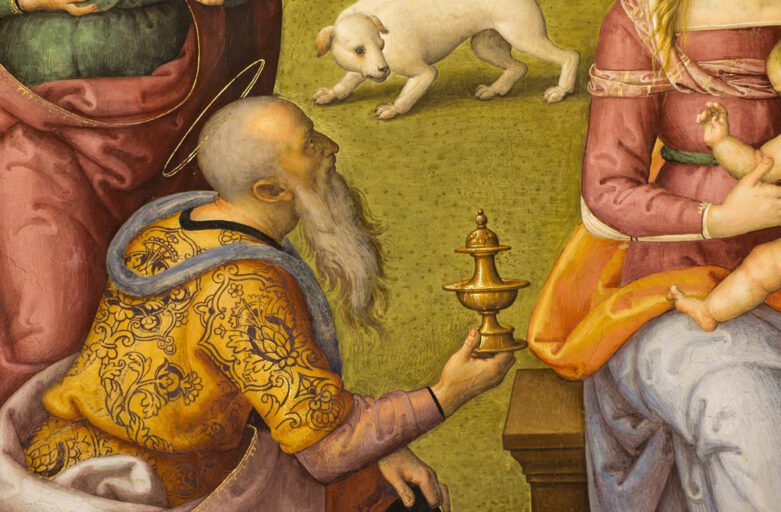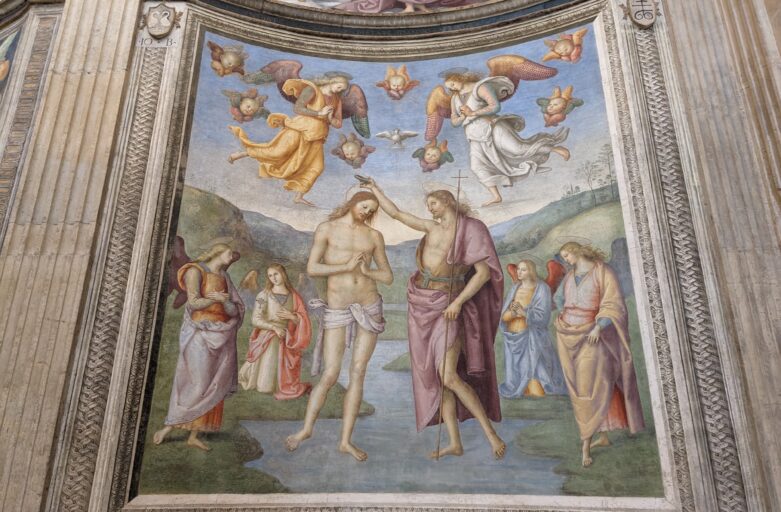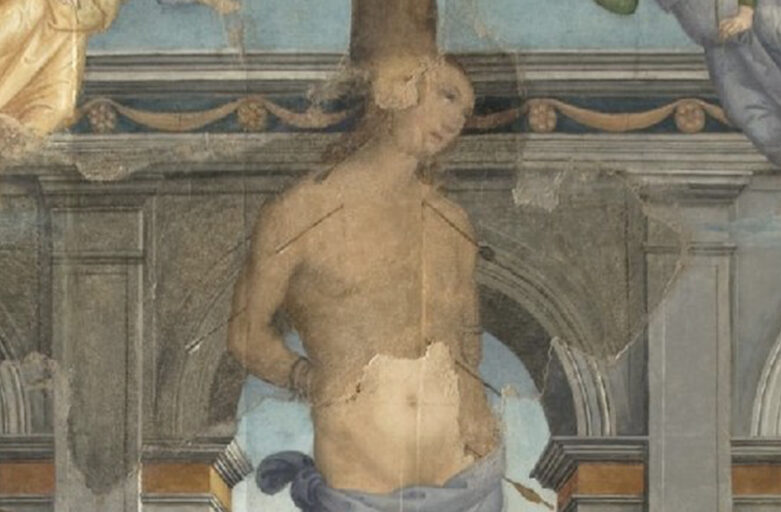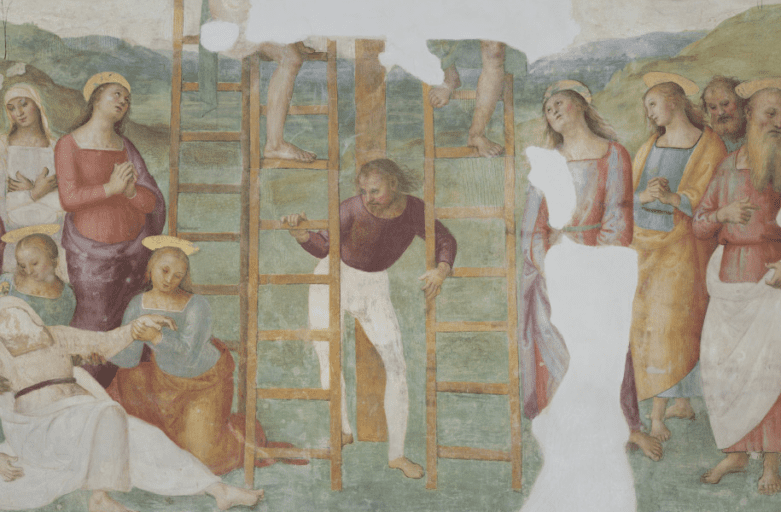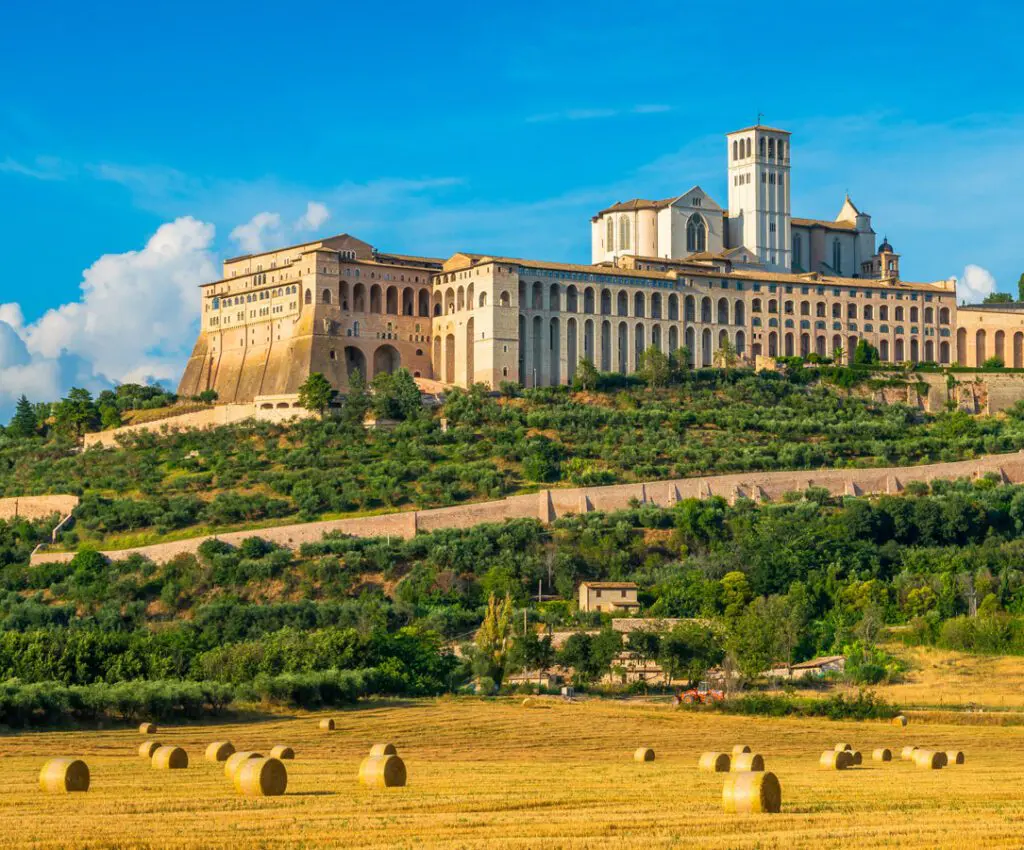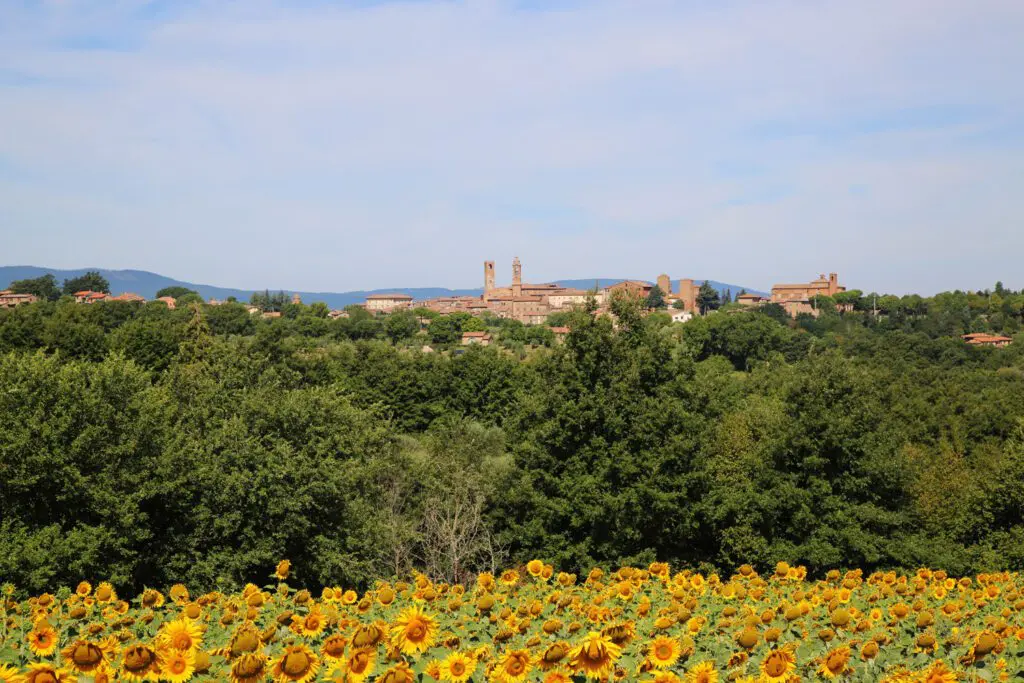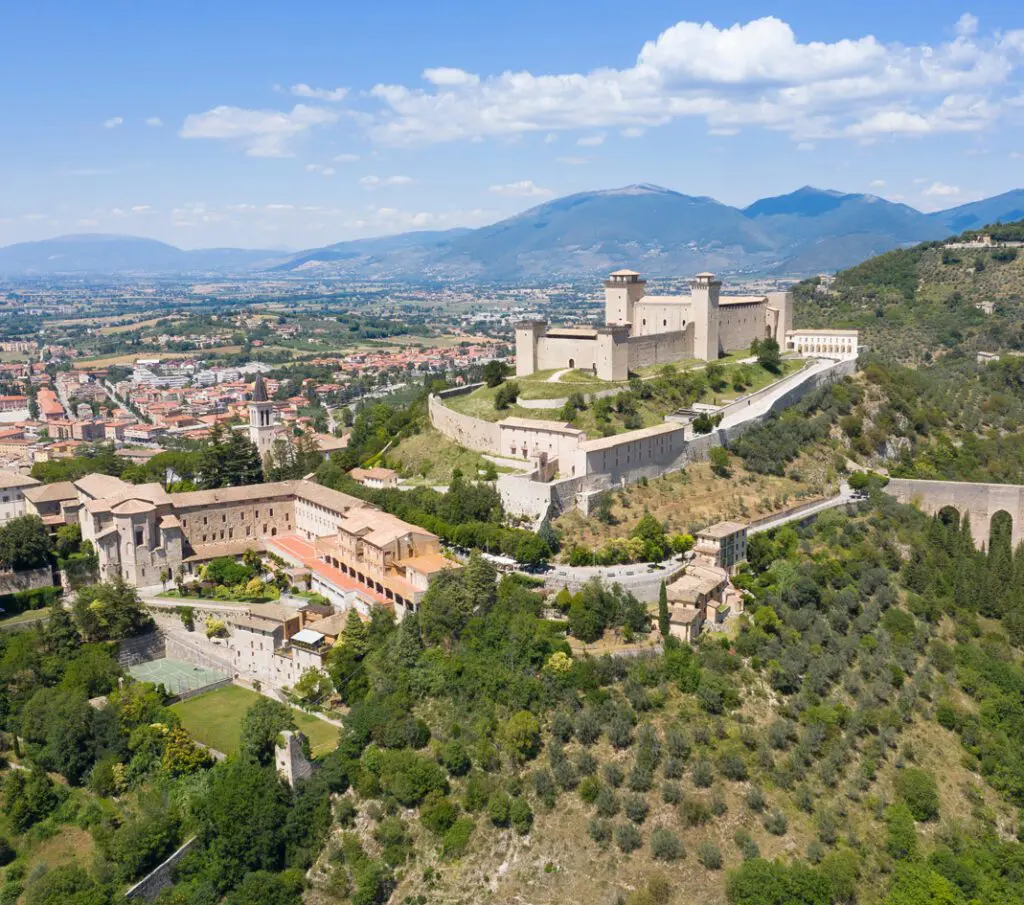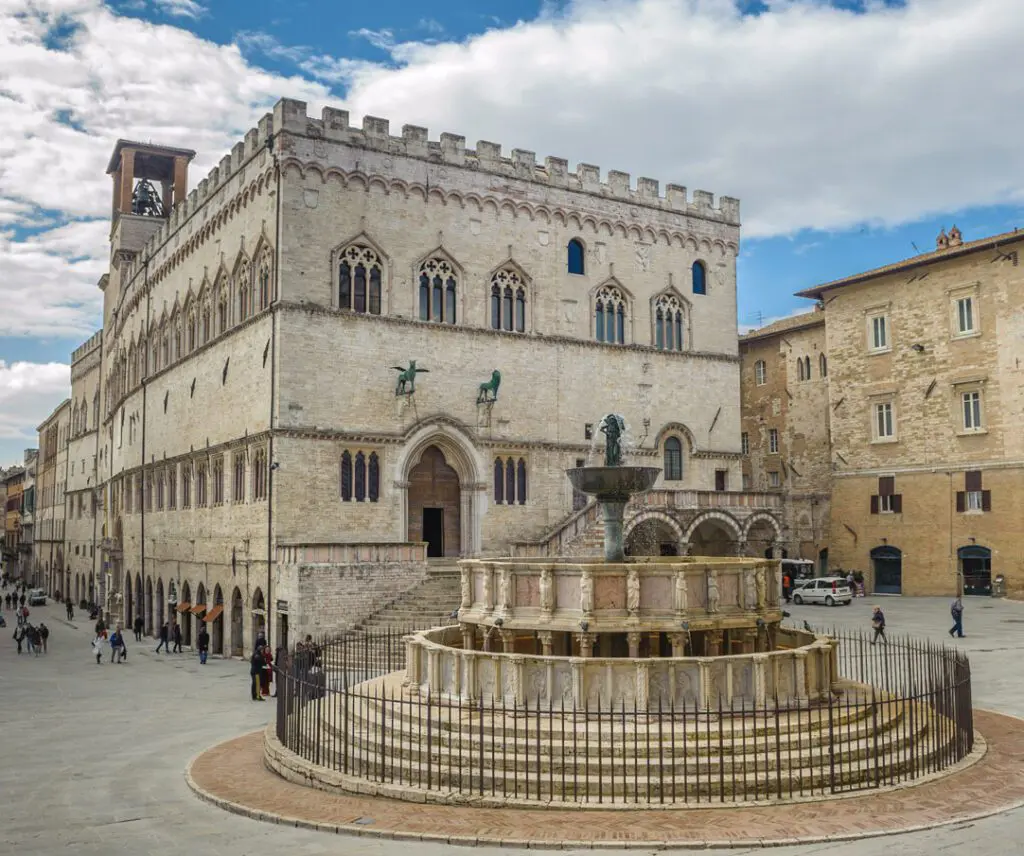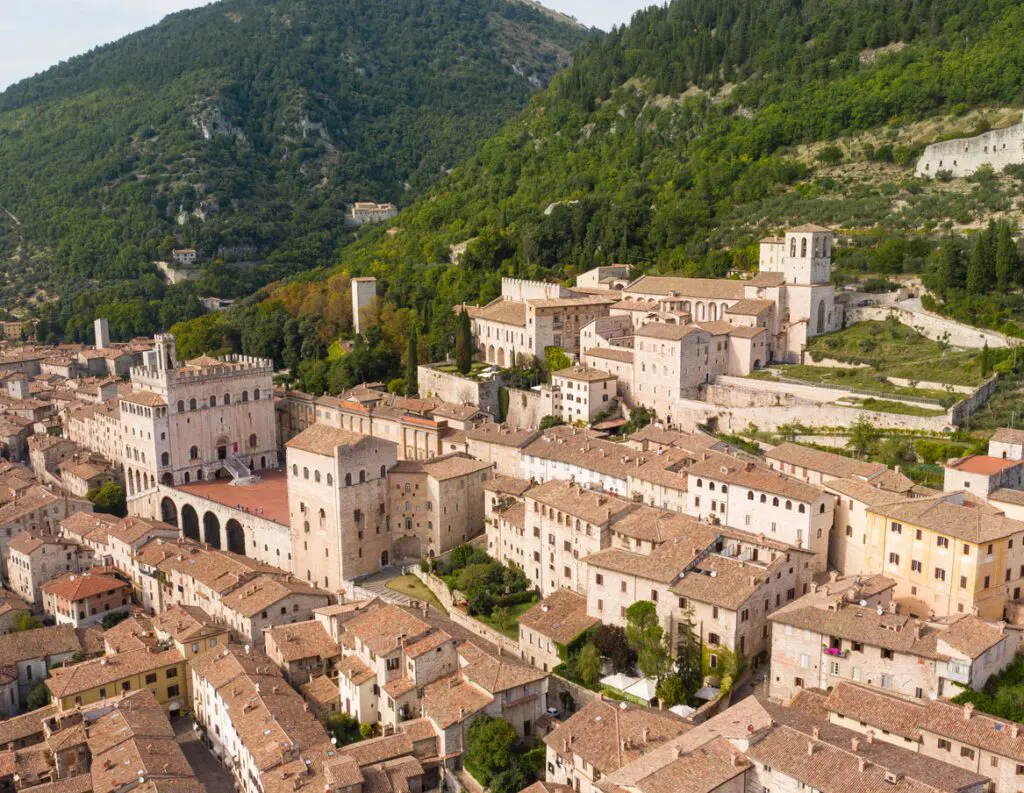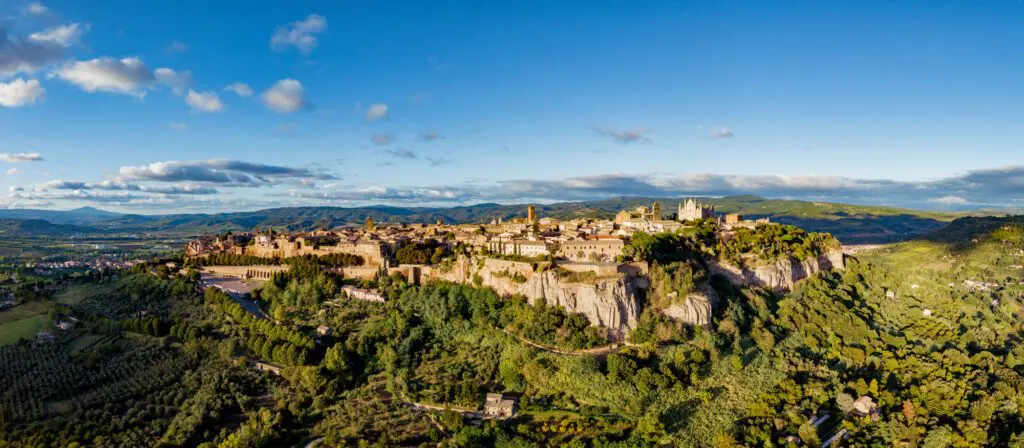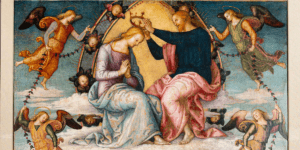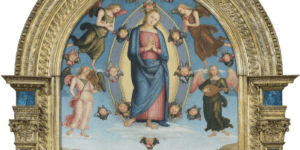Perugino in the Santa Maria dei Bianchi Chapel
In 1504 the Confraternita dei Bianchi, “White-Clad Brotherhood,” invited Perugino to work in Città della Pieve, where he was born a little more than fifty years before. The brothers asked him to fresco the altar wall in their chapel, the Oratory of Santa Maria dei Bianchi (Holy Mary of the White-Clad ones). That provided him the occasion to enrich his own hometown with a fascinating painting.
The Adoration of the Magi: setting and characters
Perugino’s Adoration of the Magi is set on the background of the smooth hills of Umbria’s landscape, rising all around a lake that recalls the Trasimeno. Clear, transparent light envelops the whole space, in whose center the Hut can be seen: here an architecture made of four pillars and truss (roof supported by a triangular structure in wood beams). Perugino adopted this solution more than once in his Nativities.
Virgin Mary – apparently based on the painter’s wife, Chiara Fancelli – is a sweet-looking mother, showing the Baby to those who came in order to worship Him. Among the many characters, all male, the three Magi / Wise Men stand out. They are richly dressed in damask garments, and followed by a long retinue of page boys and notables.
From behind the Hut, the shepherds are approaching. In spite of their very humble condition (they wear short garments and walk barefoot), they also bring gifts to Jesus.
Perugino worked carefully on the overall structure. He studied and shaped the natural landscape, the buildings, the human figures and animals in a well-ordered, balanced way. He therefore envisions an ideal world in which Humankind and Nature live in perfect harmony.
Some curiosities about the making of it
Not only the painting, but some remarks written by Perugino about it have survived.
On entering the chapel, you will notice two plaques in the wall: they reproduce Perugino’s handwritten letters. He thinks he should be paid 200 florins for la penctura che vonno fa nello oratorio, “the painting they want me to make in the oratory,” but adds, Io me contenterò de cento (florene) come paisano, “I will settle for 100, as a fellow countryman.” In the end, he will get 75 florins and an apartment as a payment.
Discover the testimonies of Perugino today
Routes and itineraries to discover the works of the divine painter
